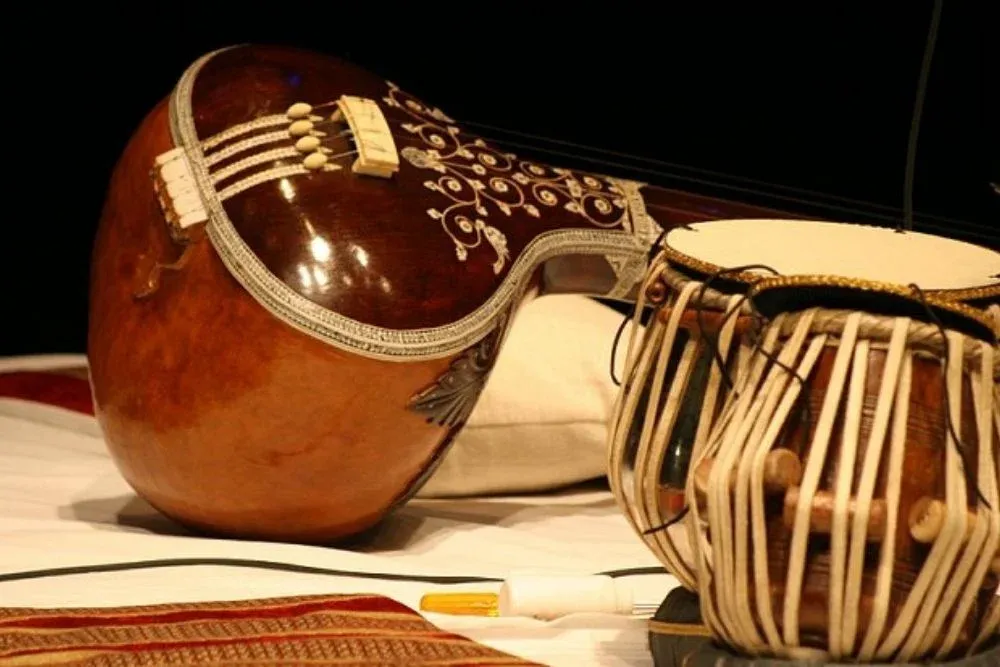The Role of Rhythm in Indian Music: An Analysis of Tala

Indian music has a rich and diverse history, with a variety of musical instruments, melodies, and rhythms. One of the most important aspects of Indian music is rhythm, or “tala.” Tala is the underlying pulse of Indian music, providing a framework for melody and improvisation. In this article, we will explore the role of rhythm in Indian music and analyze the concept of tala.
What is Tala?
Tala is a rhythmic cycle or pattern that provides the framework for Indian classical music. It is similar to a time signature in Western music but is more complex and fluid. Tala is created by a series of beats, or “matras,” which are organized into groups of two or three. Each tala has a specific number of matras, which create a repeating cycle.
For example, the most common tala in Indian classical music is “teen taal,” which has 16 matras arranged in groups of 4 (4+4+4+4). Other talas may have different numbers of matras, such as “rupak” with 7 matras (3+2+2) or “jhap taal” with 10 matras (2+3+2+3).
Tala also has a “sam,” which is the first beat of the cycle and marks the beginning of the cycle. The sam is emphasized by the musicians and serves as a point of reference throughout the performance.
The Importance of Tala in Indian Music
Tala is an essential component of Indian music, providing a framework for the musicians to improvise and create melodies. It also creates a sense of unity and cohesion among the musicians, as they all follow the same rhythmic cycle.
In addition, tala serves as a tool for communication between the musicians. The lead musician, or “soloist,” will often signal the beginning of a new section or improvisation by emphasizing a specific beat or matra. The other musicians will then follow along, creating a cohesive and dynamic performance.
Tala also provides a sense of structure to Indian music, allowing the musicians to create complex compositions with multiple sections and improvisations. Each section may have a different tala, providing a sense of contrast and variety within the performance.
Types of Talas
There are hundreds of different talas in Indian classical music, each with its own unique pattern and character. Some of the most common talas include:
- Teen Taal: As mentioned earlier, Teen Taal is the most common tala in Indian classical music. It has 16 matras arranged in groups of 4.
- Jhap Taal: Jhap Taal has 10 matras arranged in groups of 2 and 3. It is commonly used in semi-classical and light music genres.
- Ek Taal: Ek Taal has 12 matras arranged in groups of 2, 2, 2, and 3. It is often used in devotional and folk music genres.
- Rupak: Rupak has 7 matras arranged in groups of 3 and 2. It is commonly used in North Indian classical music.
- Tevra: Tevra is a rare tala with 7 matras arranged in groups of 3 and 4. It is often used in instrumental music genres.
The Complexity of Tala
While tala may seem simple at first glance, it is actually a highly complex and sophisticated system of rhythm. Talas can be divided into different subtypes, such as “chautal” (12 matras), “dhamar” (14 matras), and “jhumra” (14 matras). Each subtype has its own unique characteristics and is used in different contexts within Indian music.
Furthermore, each tala has a specific “laya,” or tempo, which can vary depending on the context and the musicians’ preferences. This means that the same tala can be played at different speeds, creating a completely different musical experience.
The Importance of Tala in Improvisation
Improvisation is a key component of Indian classical music, and tala plays an essential role in this process. The lead musician, or “soloist,” will often improvise melodies within the framework of the tala, creating a dynamic and engaging performance.
Tala allows for improvisation because it provides a structure within which the musician can create. By following the rhythm of the tala, the musician can explore different melodic ideas and phrases, while still staying within the overall structure of the performance.
In addition, tala provides a sense of continuity and coherence to the improvisation. By following the rhythmic cycle of the tala, the musician can create a sense of development and progression, building towards a climax or resolution.
The Role of Tala in Collaboration
Indian music is often performed in a collaborative setting, with multiple musicians playing together. Tala plays an important role in this context as well, allowing the musicians to communicate and collaborate effectively.
By following the rhythmic cycle of the tala, the musicians can create a sense of unity and cohesion within the performance. Each musician can contribute to the overall rhythm and melody, creating a dynamic and engaging performance.
In addition, tala allows for flexibility and spontaneity within the collaboration. Each musician can improvise and explore different ideas within the framework of the tala, creating a sense of creativity and improvisation within the performance.
The Cultural Significance of Tala
Tala is not only important within the context of Indian classical music, but it also has cultural and spiritual significance in Indian society. The rhythmic cycle of the tala is often associated with the cyclical nature of life and the universe.
In addition, tala is often used in devotional music, such as bhajans and kirtans, which are forms of worship and prayer in Hinduism. The rhythmic cycle of the tala creates a sense of unity and harmony within the devotional performance, allowing the musicians and audience to connect with the divine.





